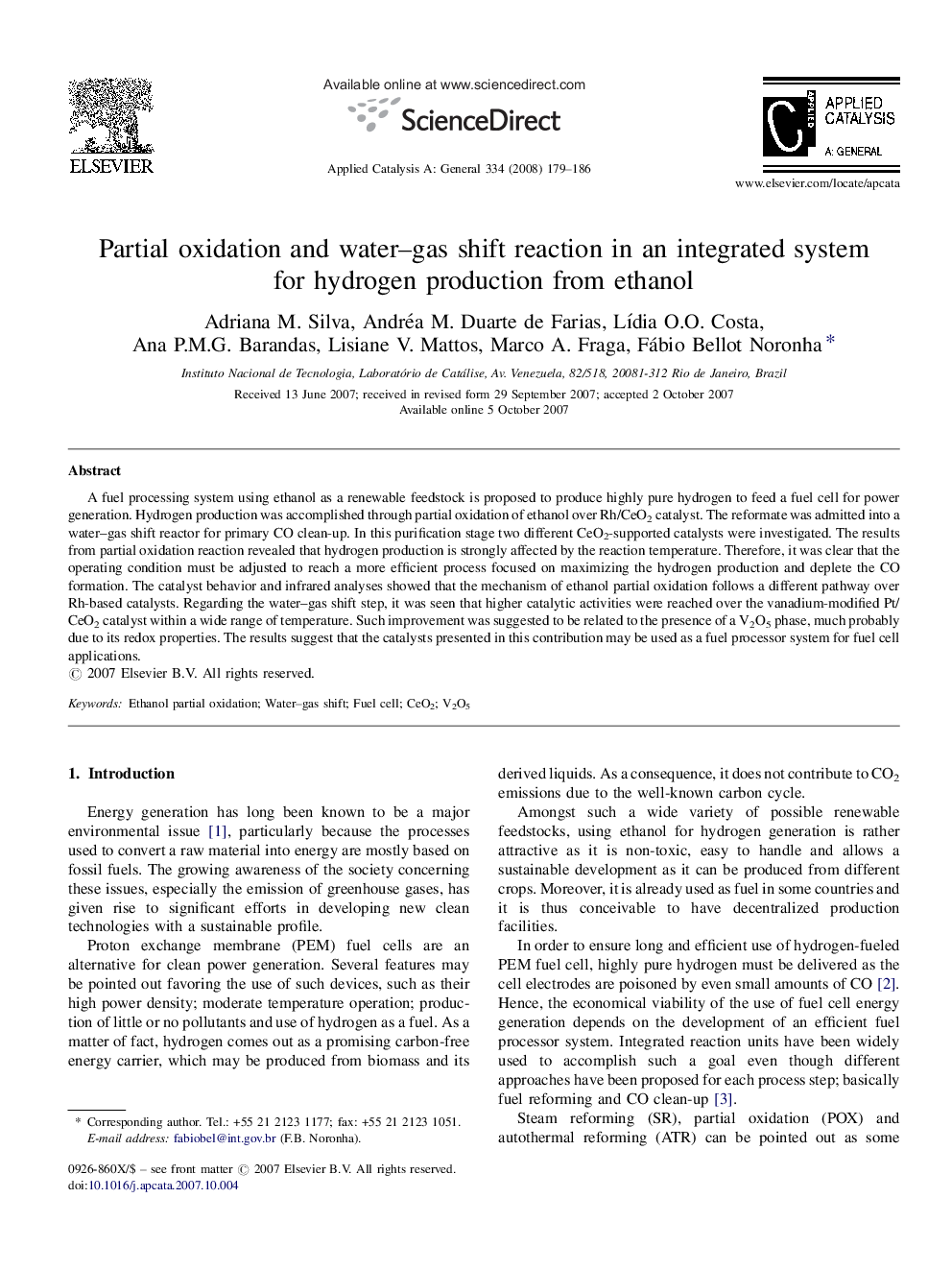| Article ID | Journal | Published Year | Pages | File Type |
|---|---|---|---|---|
| 43206 | Applied Catalysis A: General | 2008 | 8 Pages |
A fuel processing system using ethanol as a renewable feedstock is proposed to produce highly pure hydrogen to feed a fuel cell for power generation. Hydrogen production was accomplished through partial oxidation of ethanol over Rh/CeO2 catalyst. The reformate was admitted into a water–gas shift reactor for primary CO clean-up. In this purification stage two different CeO2-supported catalysts were investigated. The results from partial oxidation reaction revealed that hydrogen production is strongly affected by the reaction temperature. Therefore, it was clear that the operating condition must be adjusted to reach a more efficient process focused on maximizing the hydrogen production and deplete the CO formation. The catalyst behavior and infrared analyses showed that the mechanism of ethanol partial oxidation follows a different pathway over Rh-based catalysts. Regarding the water–gas shift step, it was seen that higher catalytic activities were reached over the vanadium-modified Pt/CeO2 catalyst within a wide range of temperature. Such improvement was suggested to be related to the presence of a V2O5 phase, much probably due to its redox properties. The results suggest that the catalysts presented in this contribution may be used as a fuel processor system for fuel cell applications.
Graphical abstractA fuel processing system using ethanol as a renewable feedstock is proposed to produce highly pure hydrogen to feed a fuel cell for power generation. Hydrogen production was accomplished through partial oxidation of ethanol over Rh/CeO2 catalyst. The reformate was admitted into a water–gas shift reactor for primary CO clean-up. Figure optionsDownload full-size imageDownload as PowerPoint slide
